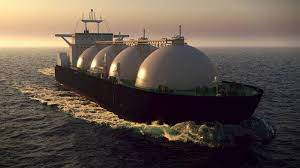Africa’s gas share in the global market will increase to over 11% of all gas supplies by 2050, according to a report by Gas Exporting Countries Forum (GECF), from 6% in 2021.
Production is projected to increase from 260 billion cubic meters in 2021, to 585 billion cubic meters in 2050, on the back of the maximal exploitation of local energy resources by governments.
This will make Africa responsible for the second largest growth in gas supply, by volume, globally, after the Middle East during the period.
GECF is an intergovernmental organization that provides a framework for exchanging experience and information among its 12 member countries and seven observer countries.
From Africa, the report features Algeria, Egypt, Equatorial Guinea, Libya, Nigeria, Angola, and Mozambique.
Africa’s demand for natural gas is growing
According to the report, the demand for natural gas in the continent will rise by 82% by 2050, and gas will account for 30% of Africa’s energy mix. With renewables, gas will be crucial in driving energy access across the continent.
Besides Africa using natural gas to alleviate energy poverty in the continent, it will also be key to economic growth.
“The narrative that Africa should not develop its natural resources, particularly natural gas … it is misguided,” said Mohamed Hamel, the Secretary General of GECF.
“A prosperous Africa will be more capable to protect its environment. The right of Africa to develop its vast natural resources can be preserved, and its access to finance and technology, facilitated,” he explained.
Africa’s population is expected to increase from 1.4 billion to 2.5 billion by 2050, increasing the demand for resources, among them energy.
Natural gas will be a key part of Africa’s energy mix
With about 900 million people in need of clean cooking fuels and another 600 million in need of reliable electricity, natural gas will play a key function in alleviating energy poverty.
Increased investment in Africa’s rich gas reserves and the revival of LNG, especially for exports, will facilitate the achievement of the projections.
It is estimated that African LNG export capacity will reach 199 million tons per annum for the period, with Mozambique, Nigeria, Mauritania, and Senegal driving this increase.
However, the lion’s share of the supply is expected from Nigeria and Mozambique, contributing more than 63% of Africa’s natural gas output.
Already, active investments have been pitched in these countries, pointing to the potential the sector holds.
According to the report, midstream investment in the sector is expected to be driven by the new projects in Mozambique, Tanzania and Mauritania.
Nigeria, Egypt, and Senegal will also contribute critically to Africa’s sector thanks to the newly launched projects.
Overall, GECF estimates that investment spending in Africa’s natural gas will top $115 billion, roughly 61% of the total expected in the 2030s.
“$33 billion will be allocated this decade, 2021-30; about $70 billion -the next decade, 2031-40; and $12 billion – in 2041-50.”
Gabriel Lima, Equatorial Guinea’s Minister of Mines and Hydrocarbons and also president of the GECF, considers the report a progressive indication for the sector.
“The uncertainties have never been so large, and the challenges so profound,” he expressed, referring especially to Africa.
“What is nevertheless clearer, and more crucial, is the energy trilemma: how to ensure a secure, affordable, and sustainable energy system over the short- to long-term?”
Nigeria, Mozambique, and the Republic of Congo launched floating terminals (FLNG) over the past three months to tap into the rising demand as European countries race to secure natural gas from Africa.
While Congo deployed two FLNG vessels with a combined production capacity of 3 million tons per year, Nigeria and Mozambique vessels have a capacity of 1.2 million and 3.4 million tons per year, respectively.

 Iran Energy News Oil, Gas, Petrochemical and Energy Field Specialized Channel
Iran Energy News Oil, Gas, Petrochemical and Energy Field Specialized Channel



